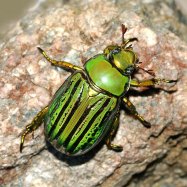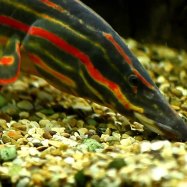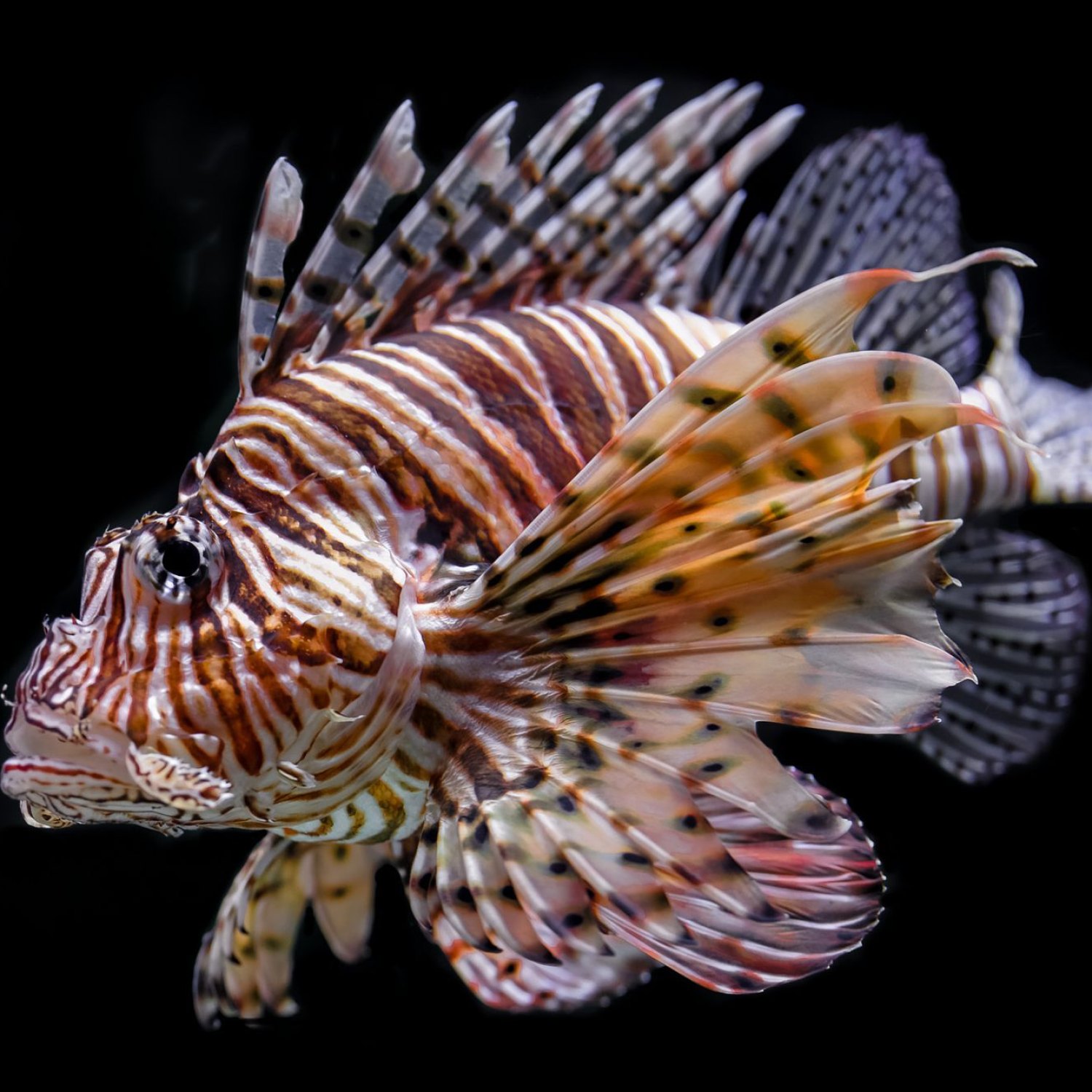
Lionfish
Up to 40 cm (16 inches)
The lionfish, known for its striking appearance and graceful movement, can grow up to 40 cm and is found in coral reefs. Belonging to the Scorpaenidae family, they have a tall, compressed body with large pectoral fins and long spines, making them a majestic sight to behold in their natural habitat. #Lionfish #CoralReefs #Scorpaenidae #MarineLife
Animal Details Summary:
Common Name: Lionfish
Kingdom: Animalia
Habitat: Coral reefs, rocky crevices, estuaries
Lionfish: The Secretive Predator of the Coral Reefs
The mesmerizing world of coral reefs is home to some of the most stunning and diverse marine creatures. Amidst this beauty and vibrance, there is an elusive, yet fascinating creature that has caught the attention of divers and marine biologists alike – the lionfish.Scientifically known as Pterois volitans, this venomous fish belongs to the family Scorpaenidae, commonly known as the scorpionfish. However, its striking appearance and predatory nature have earned it the name "lionfish Lionfish." In this article, we will explore the intriguing world of lionfish and understand what makes them a unique species in the vast world of marine life.
The Lionfish Family
Lionfish belongs to the kingdom Animalia, phylum Chordata, and class Actinopterygii, making them a close relative of other fish species like seahorses and angelfish. They belong to the order Scorpaeniformes, which includes around 1,500 species of fish with spiny fins. However, what sets lionfish apart from other species in this order is their unique body shape and striking coloration.Habitat and Distribution
Lionfish can be found in the warm, tropical and subtropical waters of the Indo-Pacific region, particularly near the coasts of Indonesia and the Philippines. Their ideal habitat includes coral reefs, rocky crevices, and estuaries, where they can take shelter and hunt for prey.Due to their striking appearance, lionfish are a popular species in the aquarium trade, and their distribution has expanded beyond their natural habitat. They have now been reported in the Caribbean Sea, Gulf of Mexico, and the East Coast of the United States, where they are considered an invasive species. It is believed that they were released into these waters by aquarium owners who no longer wanted them or by ship ballast water Lappet Faced Vulture.
The Predatory Nature of Lionfish
Lionfish are carnivorous creatures, which means they feed on other animals to survive. They are stealthy and efficient predators, using their elongated, banded pectoral and dorsal fins to corner and trap their prey. These fins also resemble the mane of a lion, adding to their unique appearance.Their diet consists of small fish, crustaceans, and other invertebrates found in their habitat. They are also known to feed on juvenile fish and compete with other predators, such as groupers, for their prey.
What makes lionfish particularly dangerous is their venomous spines. These spines are located along their dorsal, pelvic, and anal fins, and can deliver a powerful sting to their predators or unsuspecting divers. While their venom is not deadly to humans, it can cause severe pain and discomfort, and medical attention may be required in some cases.
The Unique Coloration of Lionfish
One of the most striking characteristics of lionfish is their colorful appearance. They can come in various shades of red, orange, brown, white, and black, making them an eye-catching sight against the backdrop of the coral reef. This coloration also serves as camouflage, helping them blend in with their surroundings and ambush their prey.Interestingly, lionfish are not born with this characteristic coloration. When they are first hatched, they are almost transparent, with no distinct markings. As they grow, their coloration develops, and their vibrant stripes and spots start to appear.
The Body Structure of Lionfish
Lionfish have a distinct body shape that sets them apart from other fish species. They have a tall, compressed body, which means it is relatively narrow from side to side but deep from top to bottom. This shape allows them to dart in and out of crevices in the coral reef and helps them adjust their position when hunting for prey.Their most distinctive feature is their large pectoral fins, which they use to intimidate and trap their prey. These fins are long and banded, resembling the mane of a lion, and hence the name "lionfish." Additionally, they have long, venomous spines on their dorsal, pelvic, and anal fins, adding to their predatory defense mechanism.
The Length of a Lionfish
On average, lionfish can grow up to 40 cm (16 inches) in length. However, their size can vary based on factors such as their habitat, diet, and genetics. While this may not seem particularly large, their thin body shape can make them appear longer than they actually are. In fact, they can look equally as intimidating, if not more so, than larger fish species.The Unique Adaptations of Lionfish
In addition to their striking appearance and predatory nature, lionfish also possess unique adaptations that help them in their survival. One of these adaptations includes their ability to inflate themselves to make their spines stand up, making them look even more menacing to potential predators.Another fascinating adaptation is their ability to change color. Lionfish can adjust their coloration based on their surroundings, making it easier for them to blend in and camouflage themselves. This also allows them to hide from predators and ambush their prey more effectively.
The Intelligence of Lionfish
Despite being relatively small in size, lionfish are intelligent creatures with an impressive level of problem-solving skills. Studies have shown that they are capable of learning and adapting to their environment, making them efficient hunters. They have been observed adjusting their hunting strategy based on the abundance of prey in their habitat, showcasing their intelligence and adaptability.The Threats to Lionfish
While lionfish may seem like formidable predators, they are also at risk of various threats in their natural habitat. One of the most significant threats they face is overfishing, which can deplete their prey sources and disrupt their habitat. Additionally, habitat destruction, pollution, and climate change also pose a danger to their survival.On the other hand, lionfish are considered an invasive species in the Caribbean Sea and Gulf of Mexico, where their population continues to grow and threaten native species. In efforts to control their population, several organizations have initiated lionfish culling programs, and some have even encouraged the consumption of lionfish as a sustainable solution.
The Fascinating World of Lionfish
Lionfish may be elusive and somewhat dangerous creatures, but they are also an integral part of the beautiful coral reef ecosystems. From their unique coloration and body structure to their predatory nature and intelligence, these fish have captured the fascination of divers and marine enthusiasts worldwide.As we continue to study and understand the lionfish species, it is essential to protect their habitat and ensure their survival in the vast and complex ocean world. And who knows what more we can learn and discover about these fascinating creatures in the years to come.

Lionfish
Animal Details Lionfish - Scientific Name: Pterois volitans
- Category: Animals L
- Scientific Name: Pterois volitans
- Common Name: Lionfish
- Kingdom: Animalia
- Phylum: Chordata
- Class: Actinopterygii
- Order: Scorpaeniformes
- Family: Scorpaenidae
- Habitat: Coral reefs, rocky crevices, estuaries
- Feeding Method: Carnivorous
- Geographical Distribution: Tropical and subtropical waters of the Indo-Pacific
- Country of Origin: Indonesia, Philippines
- Location: Coral reefs
- Animal Coloration: Red, orange, brown, white, black
- Body Shape: Tall, compressed body with large pectoral fins and long spines
- Length: Up to 40 cm (16 inches)
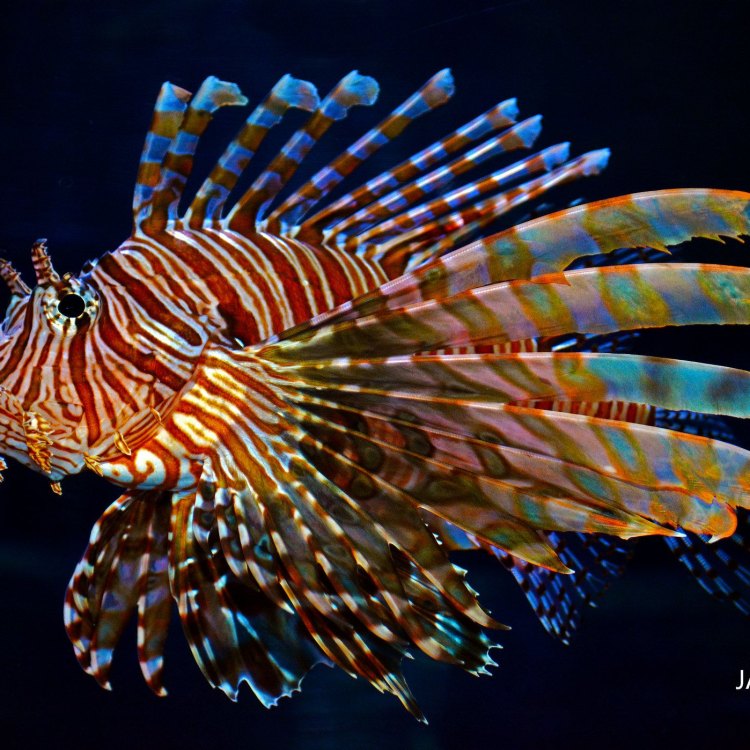
Lionfish
- Adult Size: Up to 40 cm (16 inches)
- Average Lifespan: Up to 15 years
- Reproduction: Sexual
- Reproductive Behavior: They release eggs and sperm into the water for external fertilization
- Sound or Call: No distinct sound or call
- Migration Pattern: Non-migratory
- Social Groups: Solitary or in small groups
- Behavior: Nocturnal, ambush predators
- Threats: Overfishing, habitat destruction
- Conservation Status: Not evaluated (IUCN)
- Impact on Ecosystem: Invasive species, preys upon native fish and disrupts native ecosystems
- Human Use: Popular in aquarium trade, can be caught for consumption
- Distinctive Features: Long, venomous spines on their dorsal fins
- Interesting Facts: Their venomous spines are used for defense and can cause painful stings in humans. Lionfish are native to the Indo-Pacific, but have become invasive in the Caribbean Sea and Western Atlantic Ocean.
- Predator: Larger predator fish
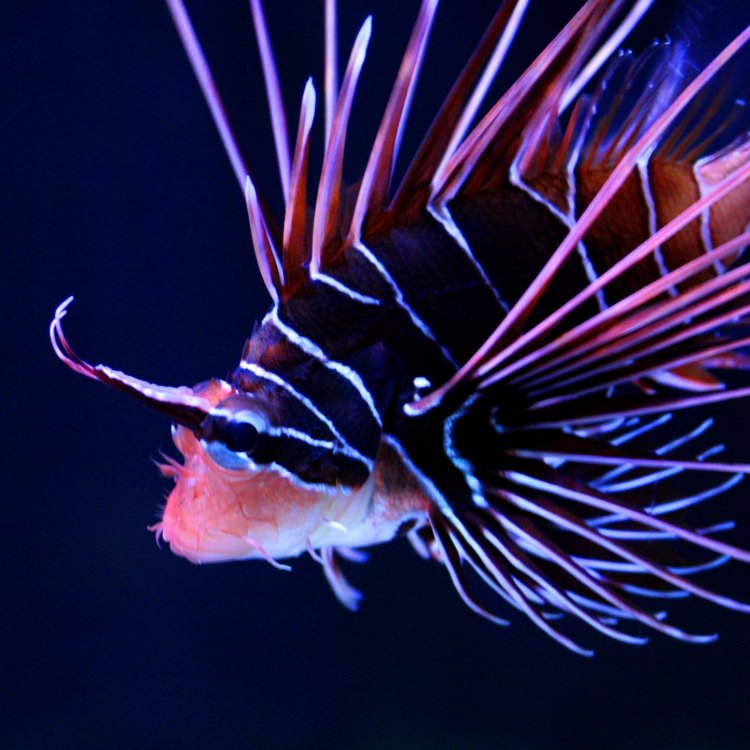
Pterois volitans
The Lethal Beauty of the Lionfish: A Unique Predator in the Ocean
The deep blue waters of the ocean hide a multitude of wonders, from colorful coral reefs to majestic marine creatures. Among them is the lionfish, a mesmerizing yet dangerous predator that has been capturing the attention of divers and marine enthusiasts around the world. With its distinctive features and fascinating behavior, the lionfish has become a subject of interest for scientists and researchers, shedding light on its impact on the ecosystem and its relationship with humans.The lionfish, also known as the turkey fish or the red lionfish, is a member of the family Scorpaenidae and can be found in the tropical and subtropical waters of the Indo-Pacific region PeaceOfAnimals.Com. It is characterized by its long, venomous spines on its dorsal fins, giving it a regal appearance and earning it the name "lionfish." Its striking appearance has made it a popular choice for aquariums, but it is also a highly problematic species in the wild due to its invasive nature.
Adult lionfish can reach up to 40 cm (16 inches) in length, making them one of the largest species in the Scorpaenidae family. They have an average lifespan of up to 15 years, which is relatively long compared to other marine creatures. Despite being sexually reproductive, lionfish do not engage in courtship or mate selection. Instead, they release eggs and sperm into the water for external fertilization. This behavior results in a large number of offspring, allowing the species to quickly populate and adapt to new environments.
One of the most fascinating features of the lionfish is its lack of sound or call. Unlike other marine animals that use sound for communication, lionfish do not produce any distinct sound or vocalization Lizard. They rely mainly on visual and tactile cues for communication.
In terms of migration, lionfish are considered non-migratory. They tend to have a small home range, typically no more than a few hundred square meters, and are territorial creatures. They can either be solitary or found in small groups, usually with members of the same species. This behavior also explains why they are commonly found hiding in crevices or under rocks, as they are ambush predators that wait for their prey to pass by. This also makes them primarily nocturnal creatures, with most of their hunting and feeding activities happening at night.
As hunters, lionfish are skilled and efficient. With their powerful jaws and large protrusible mouths, they can take on a wide variety of prey, including small fish, mollusks, and crustaceans. Their venomous spines are used not only for defense but also to immobilize their prey. The venom contains a potent neurotoxin, causing severe pain and discomfort to their attackers or unsuspecting humans. However, despite their predatory nature, lionfish are also prey to larger predator fish such as groupers, moray eels, and sharks.
While lionfish are not known to migrate, they have managed to spread from their native Indo-Pacific region to the Caribbean Sea and Western Atlantic Ocean. However, this spread is not a natural phenomenon. It is a result of human interference, specifically the introduction of lionfish into these new environments through the aquarium trade. Lionfish are sought after for their unique appearance, making them popular among hobbyists and collectors. But, when they grow too big for the aquarium, some owners release them into the wild, leading to their invasive spread.
The invasive nature of the lionfish has become a significant concern for the marine ecosystem. As they are not native to the Caribbean and Western Atlantic, they have no natural predators in these regions. This lack of natural predators, combined with their rapid reproduction rate, has caused a drastic disruption in the local ecosystems. Lionfish compete with and prey upon native fish, reducing their populations and altering the balance of the ecosystem. They also have a negative impact on the coral reefs, as they feed on juvenile fish that play a crucial role in maintaining the reefs' health.
The International Union for Conservation of Nature (IUCN) has not yet evaluated the conservation status of lionfish. However, this does not mean that they are not a species of concern. In fact, the IUCN has labelled lionfish as one of the world's worst invasive species. Researchers and conservationists are now actively working to control the lionfish population to mitigate its adverse effects on the ecosystem.
Despite their negative impact on the ecosystem, lionfish continue to be popular in the aquarium trade and are also consumed by some cultures. However, before consuming lionfish, it is essential to note that their venomous spines must be removed first thoroughly. Still, even with proper handling and preparation, there is a risk of being stung and experiencing painful symptoms if their venomous spines are not removed correctly.
In conclusion, the lionfish is a unique and fascinating predator in the ocean. Its distinctive features and behavior have captured the attention of many, but its invasive nature and impact on the ecosystem cannot be ignored. It is a reminder of the consequences of human interference and serves as a cautionary tale to be mindful of our actions and their impact on the environment. As we continue to study and understand the lionfish, perhaps we can find ways to coexist with this lethal beauty of the ocean.
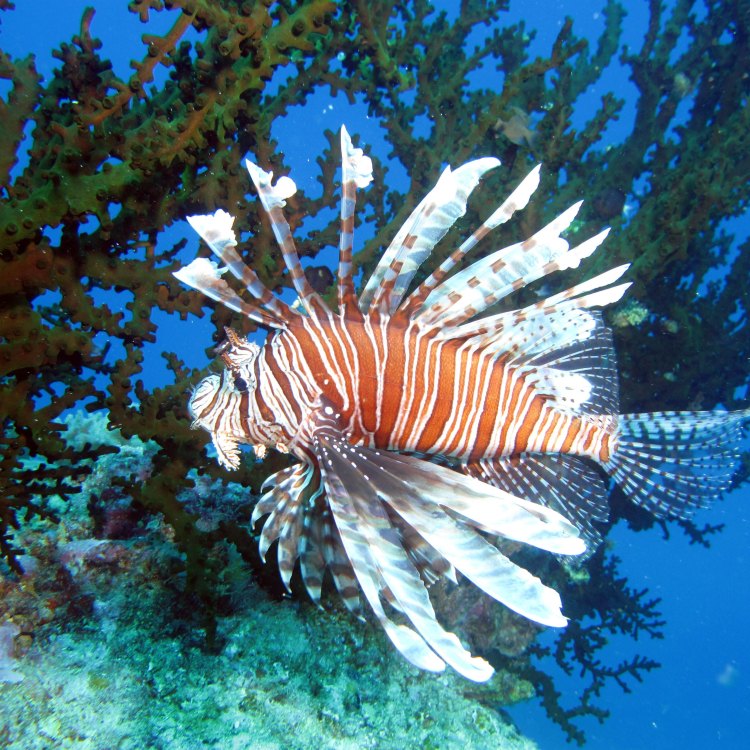
Lionfish: The Secretive Predator of the Coral Reefs
Disclaimer: The content provided is for informational purposes only. We cannot guarantee the accuracy of the information on this page 100%. All information provided here may change without prior notice.

